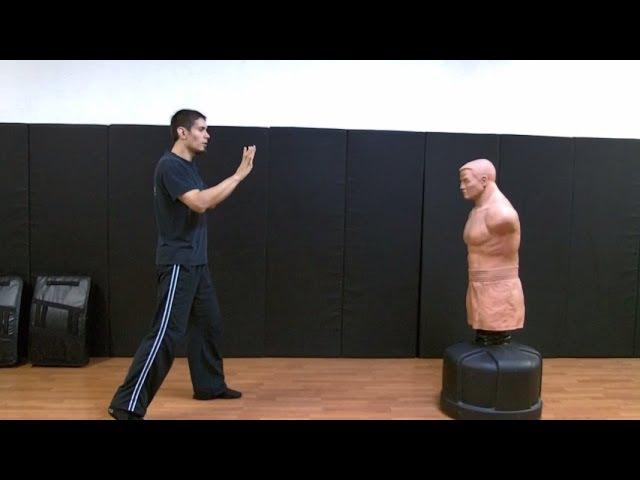Table of Contents
- Understanding the Psychology Behind Body Language as a Deterrent
- Key Posture Techniques to Project Confidence and Control
- Practical Exercises to Enhance Your Presence in High-Stress Situations
- Incorporating Body Posture Awareness into Daily Interactions for Long-Term Safety
- Final Thoughts
Understanding the Psychology Behind Body Language as a Deterrent
At the core of nonverbal communication lies the powerful influence of body language, which fundamentally shapes how others perceive our intentions and emotional states. When it comes to deterring potential threats, the psychological impact of confident posture cannot be overstated. A deliberate display of strength and control-such as standing tall with shoulders back and feet firmly planted-signals self-assurance and readiness. This subtle yet potent form of communication often reduces the likelihood of confrontation because it taps into the primal human instinct to avoid unnecessary conflict. Our brains are wired to pick up on these cues, interpreting assertive body language as a deterrent that suggests the individual is capable of defending themselves.
Several key elements contribute to this subconscious behavioral exchange, including:
- Eye contact: Maintaining steady, calm eye contact conveys confidence and situational awareness.
- Open posture: Avoiding crossed arms or hunched shoulders demonstrates openness and resilience rather than vulnerability.
- Controlled breathing: A steady breath rate helps maintain composure, preventing signs of nervousness that adversaries might exploit.
- Purposeful movements: Movements that are slow and deliberate reflect calm control rather than impulsiveness.
In mastering these components, individuals can effectively project a psychological shield that acts as a natural deterrent-minimizing risk before words need to be exchanged.
Key Posture Techniques to Project Confidence and Control
To communicate unshakable confidence and control through your body, begin with a strong, grounded stance. Position your feet shoulder-width apart and distribute your weight evenly. This creates a stable foundation, preventing any unconscious shifts that might convey insecurity. Align your spine so it is straight but not rigid, allowing your chest to open slightly-this signals assertiveness and readiness. Keep your shoulders relaxed yet pulled slightly back to avoid appearing closed off or defensive. Your head should be held high, with chin parallel to the ground, which exudes calm dominance without aggression.
Hands and arms play a subtle but crucial role in projecting authority. Avoid crossing your arms, as it can be perceived as a barrier or discomfort; instead, let them rest naturally at your sides or engage in purposeful gestures. Maintain steady eye contact to reinforce your presence, but be mindful not to stare aggressively. Incorporating these techniques into your daily interactions ensures you become an unmistakable figure of calm control-deterring threats by embodying confidence before a single word is spoken.
- Feet placement: Shoulder-width apart for stability.
- Spinal alignment: Straight with relaxed shoulders.
- Chest and head posture: Open chest, chin level.
- Arm positioning: Avoid crossing, use open gestures.
- Eye contact: Steady but non-threatening.
Practical Exercises to Enhance Your Presence in High-Stress Situations
Begin by practicing controlled breathing techniques combined with strong, grounded stances. Stand with your feet shoulder-width apart, knees slightly bent, and distribute your weight evenly to establish a foundation of stability. Incorporate slow, deliberate movements-such as deliberate head turns or hand placements-to avoid appearing startled or defensive. These micro-practices not only build muscle memory but also signal confidence through your physical presence, making you less likely to be perceived as an easy target.
Another effective exercise is role-playing scenarios where you maintain upright posture while responding to verbal provocations or unexpected disruptions. Focus on keeping your shoulders back, chin parallel to the ground, and maintaining steady eye contact without aggression. You can try these drills alone or with a partner, using cues like:
- Firm but calm voice modulation to complement your body language
- Controlled facial expressions to exhibit composure
- Confidence in your step as you navigate the simulated environment
Mastering these practical exercises reinforces the subconscious alignment of body and mind, empowering you to face high-pressure situations with unshakable presence.
Incorporating Body Posture Awareness into Daily Interactions for Long-Term Safety
Developing a heightened awareness of your body posture throughout daily interactions can significantly enhance your personal safety over time. By consciously maintaining an open yet assertive stance-such as keeping your shoulders back, chest slightly forward, and head level-you non-verbally communicate confidence and control. These subtle cues can deter potential threats, as individuals often target those who appear vulnerable or uncertain. Integrating posture awareness into routine moments, like walking down the street or engaging in conversations, helps condition your responses and builds a natural rhythm of self-assuredness.
To incorporate this practice effectively, consider the following habits:
- Pause and check: Regularly scan your posture during your day to ensure it aligns with confidence and alertness.
- Practice mindful breathing: Calm, steady breathing supports a relaxed yet poised stance, preventing tension from betraying nerve or hesitation.
- Engage your core: A strong, engaged core stabilizes your posture, projecting strength and readiness without aggression.
- Mirror confidence: Subtly mirroring others’ confident movements in social settings can reinforce your own posture and presence.
Final Thoughts
Mastering body posture is more than just a physical adjustment-it’s a powerful tool in cultivating confidence and projecting an unspoken message of strength. By consciously aligning your stance and movements, you not only enhance your own sense of security but also send clear signals to potential threats that you are self-assured and aware. Remember, confidence is often your first line of defense, and it begins with the way you carry yourself. Incorporate these posture techniques into your daily routine, and watch how your presence shifts from vulnerable to formidable, helping you navigate situations with greater poise and protection. Stay mindful, stay strong, and let your body language be your most effective deterrent.Check Our Other Blogs
- StunGun – Your Trusted Source for Stun Guns, Laws, and Self-Defense Tips
- PepperSprayLaws – Your Trusted Resource for Pepper Spray Information
- StunGunLaws – Your Trusted Guide to Stun Gun Legality and Safety



